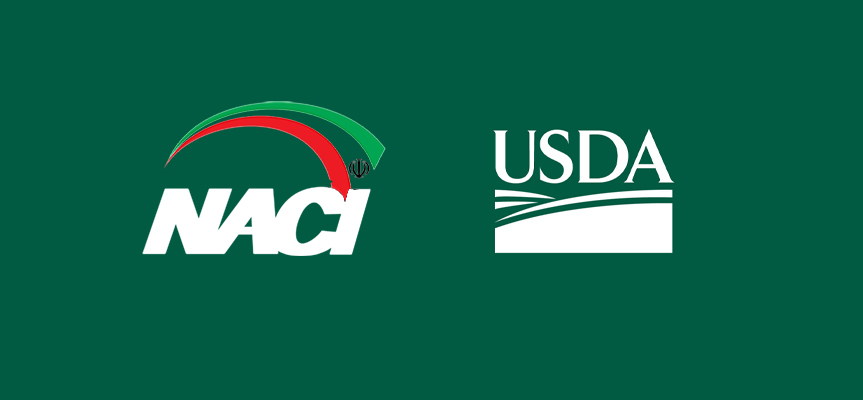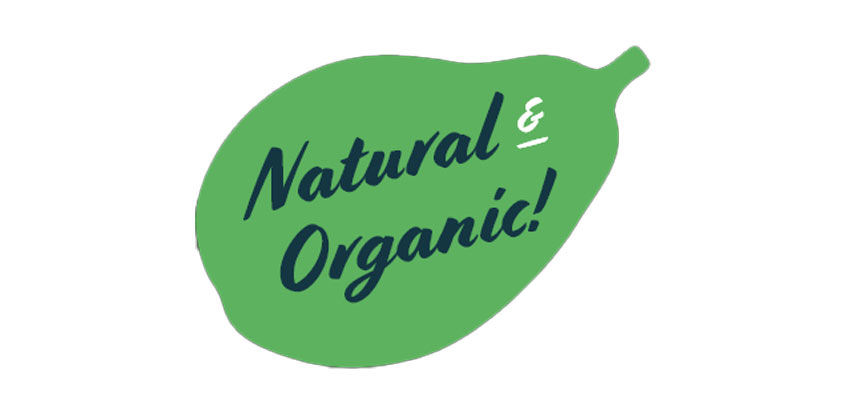The topic of distinguishing organic products from non-organic ones has, for years, become a primary concern for buyers of healthy foods—especially in an era where almost any brand, big or small, can attach a green label on its packaging and claim that the product is “natural.”
In many conversations I have had with consumers, vendors, and even managers of food businesses, one question repeatedly arises: “How can we recognize an organic product?”
For me, this issue became serious for the first time when I received a report from a private laboratory regarding a shipment of potatoes. The packaging displayed an organic label, but in sampling batch number B-1470 on 23/11/1402 (Persian calendar), nitrate levels were found to be three times the permitted limit per kilogram.
Today, with growing demand and the rise of the pseudo-organic market, knowing the correct criteria is no longer just an advantage; it is a necessity—for families, for store managers, and for business owners whose brands relate directly to public health.
Understanding Organic Products and Their Differences from Non-Organic
The first step in identifying organic products is understanding precisely what “organic” means. Many people think organic food simply means “pesticide-free” or “grown on a natural farm,” but the globally recognized definition goes beyond these notions.
According to standards set by reputable organizations such as the USDA and the European Union:
- Organic products must be cultivated without synthetic chemical fertilizers.
- They must be produced without industrial pesticides.
- They must be free from growth hormones and antibiotics.
- Their seeds must not be genetically modified.
- Most importantly, their production process must be certified by an independent body.
This international definition is mirrored in Iran under National Standard 11000, where product certification must be issued by licensed NACI centers.
However, the difference between organic and non-organic products is not limited to pesticides. The most important distinction is continuous supervision throughout the entire production chain. For example, if a farmer uses natural fertilizers but the storage or transport process does not comply with organic principles, the product can no longer be considered organic.

Many people do not realize this:
Organic begins at the farm but does not stop there.
In contrast, non-organic products usually:
- Grow faster
- Have a more uniform appearance and standard sizes
- Exhibit fewer wrinkles or blemishes
- Have longer shelf life due to preservatives or protective coatings
However, a beautiful appearance is not always an indicator of quality, and this is where proper recognition becomes crucial.
Why Correctly Identifying Organic Food Matters
The importance of this topic extends beyond individual health. It impacts community health, the environment, agricultural economics, and even the future of generations.
In a session at one of the innovation centers on trends in the healthy food market, data from Iranian chain stores showed a significant increase in customers seeking organic food compared to the previous year. If this rising demand is not carefully monitored, the market for counterfeit products will also expand—something already experienced in other countries.
Why is this distinction important?
- Direct impact on body health
Cumulative toxins, especially pesticide residues, may not show immediate effects, but their long-term impact is well-documented in various studies. Many of these substances are listed as hazardous by the United States Environmental Protection Agency (EPA.gov). Failure to recognize product quality exposes the body to substances whose effects may only appear years later.
Preventing purchase of counterfeit products
Due to higher prices, the organic market is naturally attractive for fraud. Buyers who cannot identify genuine signs may pay more for a product that is not worth it.
-
Increasing accuracy in selecting ingredients for food businesses
Many brands in the food industry, restaurants, and even small producers now advertise “using healthy ingredients.” But if the ingredients are not truly healthy, consumer trust is lost. Business owners must accurately identify organic products.
-
Supporting sustainable agriculture
Farmers who genuinely produce organic products invest more time and money. Correct consumer recognition ensures that real organic farmers benefit, not those who merely claim to be organic.
Features That Help Identify Genuine Organic Products
To distinguish real organic products from non-organic, a combination of indicators must be considered rather than relying on a single factor. In my personal experience, relying on only one factor often led to mistakes. For example, years ago, I bought tomatoes from a local stall that appeared messy and the seller claimed, “These are completely organic.” However, lab testing (sample S-2095, 27/05/1401) showed the pesticide diazinon at levels typical of industrial produce.
Key practical indicators include:
- More natural appearance
Organic fruits are often irregular in size, slightly smaller, and may have minor surface blemishes. Excessive blemishes or rot do not indicate organic quality; this is a common misconception. - Stronger aroma
Organic fruits and vegetables usually emit a more natural scent. For example, organic basil or green onions smell more intense because they grow in rich soil without chemical fertilizers. - Shorter shelf life
Organic products are not coated with preservatives, which results in a shorter shelf life. - Higher price
Organic products are not cheaper. However, an excessively high price does not necessarily guarantee quality. - Presence of certification or tracking code
In Iran, genuine organic products must have a tracking code. I recall a saffron farm invoice with code “IR-ORG-3317,” which could be verified on the official website. - Producer information
Organic farmers typically provide full transparency regarding their farm, history, and production methods. - Taste differences
Although less scientific, taste differences are often noticeable in fruits like tomatoes, strawberries, apples, and citrus. Organic products usually have a more concentrated flavor.
How to Recognize Organic Labels
The topic becomes particularly important because many producers use misleading titles. To avoid being misled, it is essential to know which labels are trustworthy.
Official and international labels
Certified labels are usually clearly displayed on packaging and include a QR code or serial number. These indicate that the product has been supervised from farm to packaging under strict standards.

Differences in label wording
- 100% Organic: The entire product is fully organic.
- Organic: At least 95% of ingredients are organic.
- Made with Organic Ingredients: Only 70% of ingredients are organic; thus, this product is not fully organic.
Misleading and unreliable terms
Terms like:
- Natural
- Local
- Fresh
- Pure
- Healthy
do not guarantee organic quality.
Are Organic Products Visibly Different from Non-Organic Ones?
Yes, there are key indicators:
- Fruit size: Organic fruits tend to be smaller, as they are not treated with additional growth hormones or chemical fertilizers.
- Natural color: They have a natural color, neither too shiny nor too dark, reflecting authenticity.
- Imperfect shape: Some irregularity or minor blemishes indicate a lack of chemical treatment.
- Egg yolks: Organic eggs have darker, often golden-orange yolks.
Appearance helps, but the certified label remains the main criterion.
Differences in Organic vs. Non-Organic Production
Organic labeling is not just a title; it reflects a fundamentally different and regulated production process that enhances nutritional value.
Healthy soil: the starting point
Organic farming treats soil as a living system. Practices include:
- Use of green fertilizers
- Rest periods for soil
- Crop rotation
Non-organic farming often depletes soil with chemicals over time.
Prohibition of strong chemical pesticides
Non-organic crops rely on strong chemicals for pest control, whereas organic farming uses:
- Natural pesticides
- Biological pest control
- Natural predators instead of aggressive interventions
No growth hormones
Non-organic products are often artificially enlarged with hormones; organic products grow naturally.
Shorter storage process
Without preservatives, organic products reach the market faster, contributing to better flavor and nutritional value.
Why Are Organic Products More Expensive?
Reasons include:
- Higher cost of natural cultivation and care: more labor, tools, and stepwise management
- Lower but higher-quality yield: slower growth reduces harvest volume per unit
- Long certification process: farms require years of supervision to obtain organic certification
- High risk for producers: lack of chemicals and hormones increases vulnerability
Read more : Why Are Organic Products More Expensive?
Difference Between “Organic” and “Natural” Labels
Many consumers assume “natural = organic,” but:
- Natural: A marketing term with no official standard
- Organic: Legally regulated, traceable, and with a transparent production process
In simple terms: all organic products are natural, but not all natural products are organic.
Signs of Genuine Organic Products When Shopping
Appearance alone is not a reliable indicator. Some assume organic products should be smaller, less attractive, or blemished, but this is not always true. Well-managed organic farms can produce visually healthy products.
Typical signs of genuine organic products:
- Lack of unnatural shine on fruit skin
- Stronger natural aroma and flavor
- Seasonal alignment: organic crops usually follow natural seasons
- Size variation: slight differences indicate no growth hormones
- Valid certification: issued by authorities like the National Organic Center of Iran or international organizations
Scientific Look at Global Organic Standards
Understanding “how to distinguish organic from non-organic products” requires familiarity with international production and supervision standards. Organic certification is a scientific framework, not just a claim.
- USDA (United States): soil must be chemical-free for 3 years, seeds non-GMO, no artificial preservatives used in processing
- EU Organic (European Union): strict focus on animal welfare and pesticide control
- IFOAM (International Federation of Organic Agriculture Movements): establishes global organic farming principles followed by most countries
- Iran: National organic standards have been established in recent years; some farms in Fars, Yazd, and Kerman have received certification

Where to Buy Reliable Organic Products and Key Tips
- Reputable organic stores: specialized stores and certified brands
- Local markets with product documentation: purchase directly from verified farmers and request farm, method, and certification information
Key tips when buying:
- Always check the label and certification stamp
- Ask when the product was harvested and what fertilizers/pesticides were used
- Examine the price: if too cheap, the product is likely not genuine
- Fresh organic products generally have shorter shelf life; check packaging dates
Role of brands and consumer education
- Trusted brands, such as Grownida Innovation Center, provide transparency and consumer education
- Informed consumers are the best defense against counterfeit products
Conclusion
Distinguishing organic from non-organic products is crucial not only for personal health but also for businesses, producers, and food startups. Organic products are produced naturally and sustainably, with higher nutritional and environmental benefits.
For informed and intelligent choices:
- Pay attention to certified labels
- Examine natural appearance, smell, and taste
- Purchase from reputable stores and brands
- Always inquire about the farm and production methods
These steps improve the quality of life for you and your family while strengthening the sustainable market for healthy and natural products.
Frequently Asked Questions
How can we tell if a product is organic?
Check certified labels, observe natural appearance, real aroma, and information about the farm and production methods.
What characteristics do organic products have?
Organic food is free from strong chemical pesticides, hormone-free, and has natural taste and aroma. Sizes and shapes are slightly varied and natural.
Where can we buy reliable organic products?
Visit specialized stores, certified brands, or local markets with product documentation. Always check labels and certifications.
How can we distinguish organic fruit from non-organic?
Pay attention to color, texture, aroma, and taste. Organic fruits are generally more natural, may have minor blemishes, and appropriate texture.
What does an organic label mean?
An organic label indicates that the product has been produced according to legal and scientific standards, and cultivation and harvesting processes have been carried out using natural methods.

